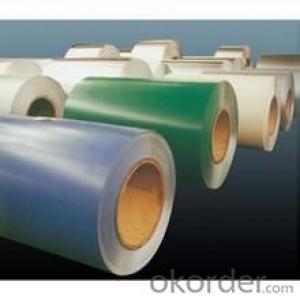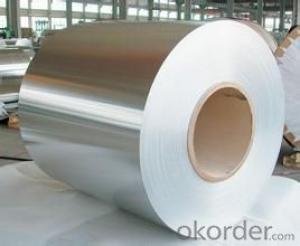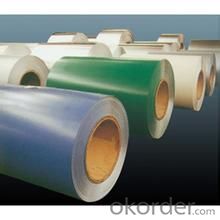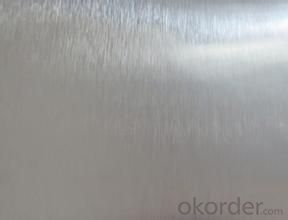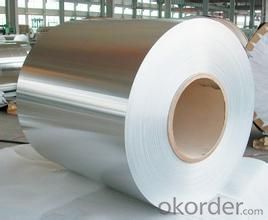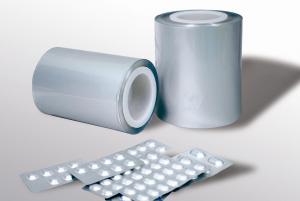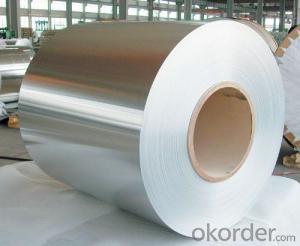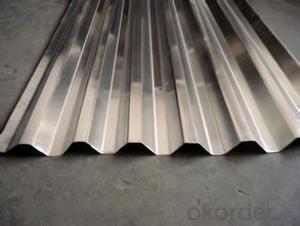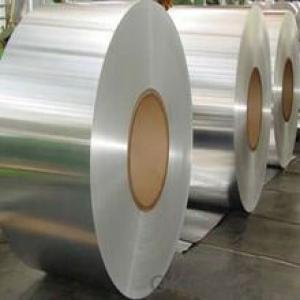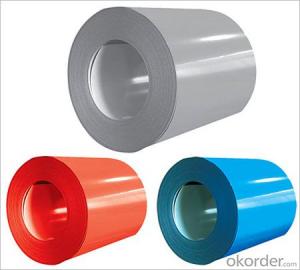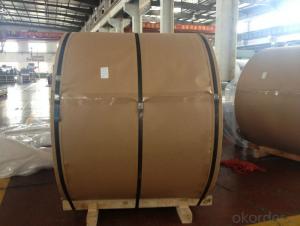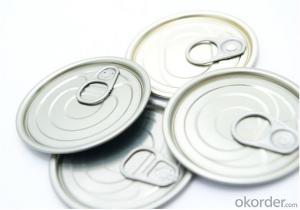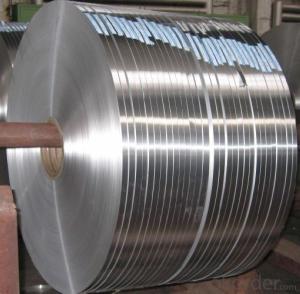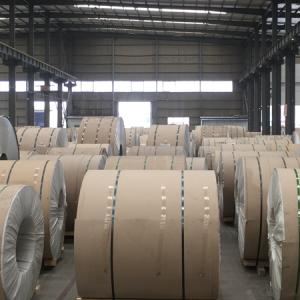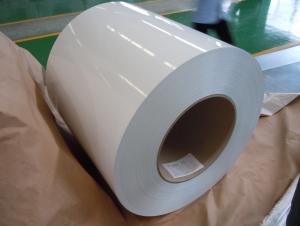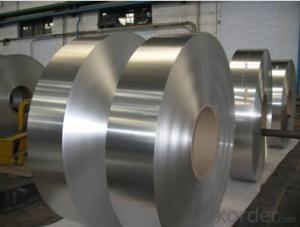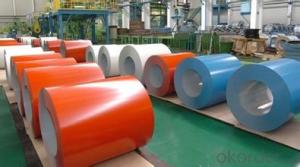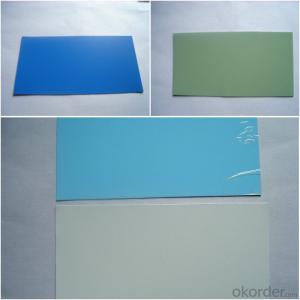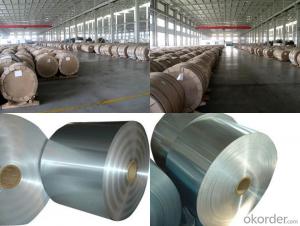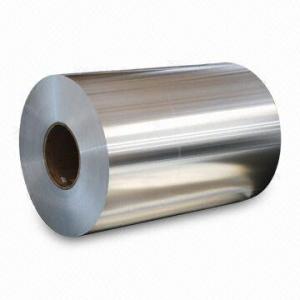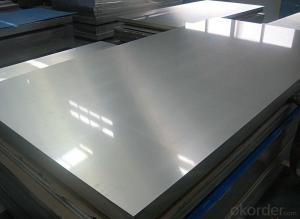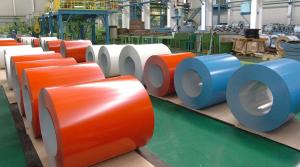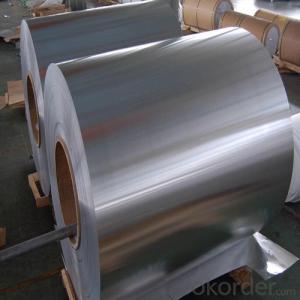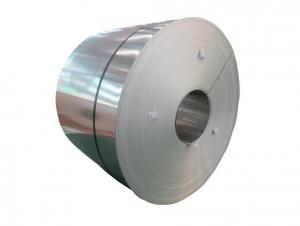Full Coloured Painted Aluminum Coil
- Loading Port:
- China Main Port
- Payment Terms:
- TT OR LC
- Min Order Qty:
- -
- Supply Capability:
- -
OKorder Service Pledge
OKorder Financial Service
You Might Also Like
Aluminium is a relatively soft, durable, lightweight, ductileand malleablemetalwith appearance ranging from silvery to dull gray, depending on the surfaceroughness. It is nonmagnetic and does not easily ignite. A fresh film ofaluminium serves as a good reflector (approximately 92%) of visible lightand an excellent reflector (as much as 98%) of medium and far infraredradiation. The yield strength of pure aluminium is 7–11 MPa,while aluminium alloys have yield strengths ranging from200 MPa to 600 MPa. Aluminium has about one-third the densityand stiffness of steel. It is easily machined,cast, drawn and extruded.
Aluminium alloys (or aluminum alloys; see spellingdifferences) are alloysin which aluminium(Al) is the predominant metal. The typical alloying elements are copper, magnesium,manganese,silicon,tin and zinc. There are twoprincipal classifications, namely casting alloys and wrought alloys, both of which are furthersubdivided into the categories heat-treatableand non-heat-treatable. About 85% of aluminium is used for wrought products,for example rolled plate, foils and extrusions.Cast aluminium alloys yield cost-effective products due to the low meltingpoint, although they generally have lower tensile strengthsthan wrought alloys. The most important cast aluminium alloy system is Al–Si,where the high levels of silicon (4.0–13%) contribute to give good castingcharacteristics. Aluminium alloys are widely used in engineering structures andcomponents where light weight or corrosion resistance is required
Specification:
Alloy: AA1050, 1060, 1100,AA3003, 3005, 3015, 5052, 5754, 5083,8011, etc
Temper: H14/16/18/22/24/32,HO etc.
Thickness: 0.2mm—100mm
Width: 100mm—2300mm (Can be slitted)
Inner Diameter:508MM
Coil Weight:500kg-3000kg(Max.)
Application:Foil stock, Circles, Roofing, Can stock, Marine plate,Anti-slipery purpose in vehicles, packing and appliance.
Features:
1. Excellent quality of products
2. Quick delivery
3. Best service to clients
4. BV,SGS avalible
5. No buckle o waveness
6. Tension leveling
7. Certificate of Origin
8. Form A,E
Packaging Detail:
Carton ,Woodenpallet with plastic protection packing ,standard seaworthy packing or as yourrequest.
Production Capacity:
AnnualProduction capacity of 600,000 tons.
Products areexported to United States, Canada, U.A.E, Brazil, Mexico,Thailand, Vietnam,Nigeria etc, over 100 countries andregions all over the world.
Production Line:
CNBM aluminumproduction base is comprised of 18 aluminumannealers, 10 coil and foilmills, 4 continuous production lines, 2hot rolling production line and 3prepainted lines.
FAQ:
1. What is the form of payment?
Normally 30% TT, L/C
2. Type of quotation?
FOB, CFR, CIF
3. Port of loading?
Shanghai port
4. Delivery time?
30 days after client’s deposit
- Q: What is the cost-effectiveness of using aluminum coils in the long run?
- The use of aluminum coils in the long term can yield significant cost-effectiveness. Despite the initial higher cost compared to materials like copper, aluminum coils offer long-term advantages that make them a wise choice. To begin with, aluminum coils exhibit exceptional resistance to corrosion, which means they are unlikely to deteriorate over time. Consequently, they have a longer lifespan and require less maintenance, resulting in reduced costs. Additionally, aluminum coils possess high heat transfer efficiency, enhancing energy efficiency and lowering energy consumption. Moreover, aluminum is a lightweight material, making it more economical and easier to transport and install compared to heavier alternatives. This leads to reduced labor costs during installation or replacement. Another factor that enhances the cost-effectiveness of aluminum coils is their recyclability. Aluminum is highly recyclable, and the scrap value of aluminum coils can offset the initial investment. Furthermore, the use of recyclable materials aligns with sustainability objectives and can contribute to a positive brand image and reputation. In summary, despite the higher upfront cost, aluminum coils offer long-term benefits such as corrosion resistance, energy efficiency, recyclability, and reduced maintenance and labor costs. Consequently, they are a cost-effective choice in the long run.
- Q: What is color aluminum coil?
- Colored aluminum coil is that the aluminum alloy whose surface has been shaded. The surface color after special treatment will not fade within 30 years at least because of the stable performance and good corrosion resistance. The weight per unit volume of color aluminum coil is the lightest among metal materials because of the low density and high hardness. Color aluminum is a newly emerging material in the field of doors and windows. Compared with steel, the biggest advantage is unparalleled firmness, varied colors and non-toxic for which steel has always been blamed. Therefore, it is widely used in areas such as doors and windows, sunroom and balcony seal. Color coated aluminum coil has become one of the most popular decorative material which is environmentally-friendly, durable and aesthetic. As a decorative material, it has the following unparalleled advantages: uniform color, bright and clean, strong adhesion, durability, anti-acid and anti-alkali, corrosion resistance, wind and weather resistance, decay and abrasion resistance and ultraviolet proof. Products categories: polyester coated aluminum coil (PE) and perfluorocarbon coated aluminum coil (PVDF).
- Q: Are aluminum coils resistant to corrosion?
- Yes, aluminum coils are resistant to corrosion. Aluminum has a natural oxide layer on its surface, which acts as a protective barrier against corrosion. This oxide layer forms when aluminum is exposed to oxygen in the air. It prevents the metal from coming into direct contact with moisture or other corrosive elements. Additionally, aluminum coils can be further protected through various coating or finishing processes, such as anodizing or painting. These additional layers provide an extra level of protection against corrosion, making aluminum coils highly resistant to rust and other forms of deterioration.
- Q: Can aluminum coils be used in high-humidity environments?
- Yes, aluminum coils can be used in high-humidity environments. Aluminum is a corrosion-resistant metal, and when properly protected with coatings or finishes, it can withstand high levels of humidity without rusting or deteriorating.
- Q: How are aluminum coils coated for corrosion resistance?
- Aluminum coils are coated for corrosion resistance through a process called coil coating. Coil coating involves the application of a protective coating onto the aluminum surface to prevent it from corrosion caused by exposure to the environment. The first step in the process is the cleaning and pre-treatment of the aluminum coil. This is done to ensure that the surface is free from any contaminants, such as grease, dirt, or oxidation. The coil is typically cleaned using chemical cleaning agents and then rinsed to remove any residue. After cleaning, the coil is coated with a primer. The primer acts as a bonding agent between the aluminum surface and the subsequent coating layers. It enhances the adhesion of the topcoat and provides an additional layer of protection against corrosion. Once the primer is applied, the coil is then coated with a topcoat. The topcoat is usually a polymer-based paint that provides the desired color and appearance to the aluminum surface. It also acts as a barrier against moisture, UV radiation, and other environmental factors that can cause corrosion. The coating process can be done using various techniques, such as roll coating, spray coating, or coil painting. Each technique has its advantages and is chosen based on factors like cost, production speed, and the desired coating properties. In addition to the primer and topcoat, some aluminum coils may also receive a clear protective coating. This additional layer enhances the durability and longevity of the coated surface, providing an extra level of protection against corrosion. Overall, the coating of aluminum coils for corrosion resistance is a crucial step in ensuring the longevity and performance of the products made from these coils. The specific coating process and materials used may vary depending on the application and desired performance requirements.
- Q: Is it easy to bend aluminum coils and what factors affect their flexibility?
- <p>Aluminum coils are relatively easy to bend due to their malleability and flexibility. However, the ease of bending can vary depending on the alloy type, thickness, and temper of the aluminum. Thinner gauges and softer tempers are generally easier to bend. The process can be done manually or with machinery, and it's important to consider the coil's width and the radius of the bend to avoid cracking or other damage.</p>
- Q: An they say aluminum can cause breast cancer in some.
- actually, it's usually ANTI-PERSPIRANTS that contain aluminum. what the aluminum does, is block the sweat from exiting your sweat glands, therefore, keeping your underarms dry. however, your body sweats for a couple reasons: one being the method to rid toxins. when you block the main glands, which just so happen to be under your arms, you risk keeping those toxins in your body. Now, deodorant on the other hand, allows you to naturally perspire, but just adds an aroma if you will so that you won't smell funky. it won't keep you as dry, though. i would love to be able to use plain deodorant or the organic kind you mentioned, but i sweat a lot must resort to using anti-perspirants. if you must, just keep it to a minimum. for example, don't use at night. let your body cleanse itself while you sleep at least
- Q: Can aluminum coils be used for HVAC ducting?
- Yes, aluminum coils can be used for HVAC ducting. Aluminum is a popular choice for ducting due to its lightweight nature, corrosion resistance, and ability to efficiently transfer heat. It is commonly used in both residential and commercial HVAC systems.
- Q: i am thnking of building my own aluminum john boat and using the propulsion from a jetski to power it, i was wondering if anyone had taken on a project like this and had a few pieces of advice to offer while i am still in the planning stages. the biggest concern i have right now involves the tunnel for the intake, should i use the original fiberglass from the jetski or build up a tunnel out of aluminum for it?
- While I have not built a john boat of aluminum, I have built or fabricated a lot of other things. If this were my project, and as it is the scoop you are talking about, not the tunnel itself. Aluminum is one of the most expansive metals, and I do not see you being able to seal a fiberglass/aluminum interface with much promise of it holding long term. I would fabricate or mold a new one of aluminum so it would have the same expansion rate as the metal around it. Electrolysis is not an issue, but I think the thermal expansion difference would be on the seals. good luck on your project, sounds fun.
- Q: Aluminum coil thickness measurement, real-time measurement of aluminum coil thickness value, you can use displacement sensor?
- You should use the eddy current displacement sensor KD2306 if the object is aluminum,
Send your message to us
Full Coloured Painted Aluminum Coil
- Loading Port:
- China Main Port
- Payment Terms:
- TT OR LC
- Min Order Qty:
- -
- Supply Capability:
- -
OKorder Service Pledge
OKorder Financial Service
Similar products
Hot products
Hot Searches
Related keywords
